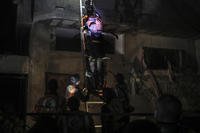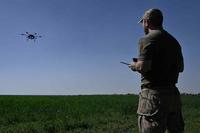 Boeing's recent strategy to question the effectiveness of the F-35's stealth capabilities against the latest air defense radars brings to mind similar questions that were raised about another expensive next generation stealth aircraft about 13 years ago.
Boeing's recent strategy to question the effectiveness of the F-35's stealth capabilities against the latest air defense radars brings to mind similar questions that were raised about another expensive next generation stealth aircraft about 13 years ago.
In 1991, Pentagon tests found that Northrop Grumman's B-2 Spirit was less capable of evading radars with its stealth bat wing design than initially expected. These problems along with cost overruns cut the B-2 program by more than 70 percent.
The Air Force had planned to field 75 of the B-2 bombers, but Congress ended the program at 21 aircraft as costs skyrocketed. If you include all procurement costs, the B-2 cost $929 million per aircraft. It almost makes the F-35 sound like a steal with its procurement costs at $162 million per aircraft.
However, the current debate deals with the F-35 and doubling down on more EA-18 Growlers to increase the Navy's electronic attack capabilities. Boeing has pushed the Navy to buy more Growlers. The Navy has requested 22 Growlers in its unfunded priorities lists with the possibility of buying up to 50 more.
Chief of Naval Operations Adm. Jonathan Greenert said its a top Navy priority to increase the number of Growlers aboard each carrier from five to seven. The logic had been that with F-35Cs, the Navy's need for electronic attack aircraft would diminish, not increase. But that's assuming the Navy stays on board with the Joint Strike Fighter Program.
Plenty of questions were asked about the Navy's commitment to the program when the service cut its F-35C five-year acquisition plan from 69 to 36 aircraft. More questions were asked when Greenert added the Growlers to the unfunded priority list.
Greenert has repeatedly said the Navy is committed to the F-35 program, but he did hedge in regards to the value of stealth in his recent Congressional testimony.
"[Stealth] is needed for what we have in the future for at least 10 years out there and there is nothing magic about that decade," Greenert told Congress. "But I think we need to look beyond that. So to me, I think it's a combination of having aircraft that have stealth but also aircraft that can suppress other forms of radio frequency electromagnetic emissions so that we can get in."
That comment sounds an awful lot like a few of the lines offered in the presentation given by Mike Gibbons, Boeing's vice president for Super Hornet and Growler programs, at the Navy's annual conference earlier this month.
"The density of the threat is getting more complex and more difficult. The electromagnetic spectrum is getting more complex and more difficult and requires more of what the Growler provides in electronic attack and electronic awareness. Only the Growler has this capability," Gibbons said in an interview with Military.com.








